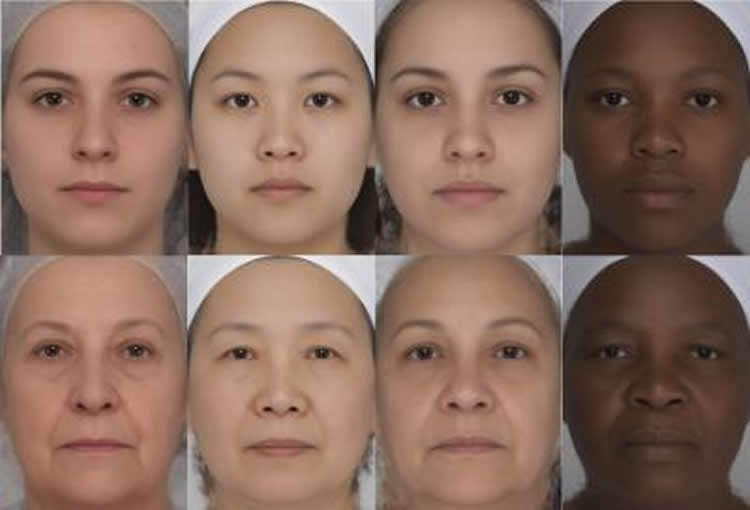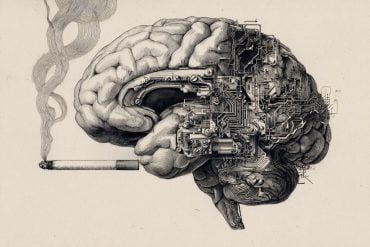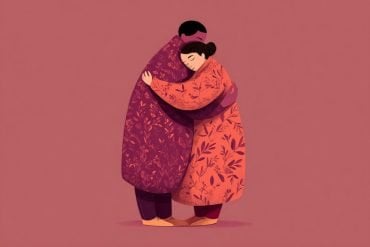Summary: A new study reveals women with increased facial contrast are often perceived at being younger.
Source: Frontiers.
Aspects of facial contrast, a measure of how much facial features stand out in the face, decrease with age in women across a variety of ethnic groups, finds a study in open access journal Frontiers in Psychology. The study also shows that observers perceive women with increased facial contrast as younger, regardless of the ethnic background of the women or the observers. This suggests that facial contrast is a cross-cultural cue to age perception.
Our age can influence how other people see and treat us. For many people, maintaining a youthful appearance is important, as they perceive this as more attractive and a sign of health. But what makes one face look older than another? Some signs of aging, such as wrinkles, are well-known and common across different ethnicities, but others are less understood.
A French research team, in collaboration with American researchers, have discovered one such aspect of aging — facial contrast.
“Facial contrast refers to how much the eyes, lips and eyebrows stand out in the face in terms of how light or dark they are or how colorful they are,” says Aurélie Porcheron, a researcher involved in the study.
Previous studies have shown that increased facial contrast is a cue to perceiving increased health, youthfulness and femininity. However, most previous studies have involved Caucasian faces or Caucasian observers, making it difficult to know if the findings are applicable to other ethnicities.
While people of different ethnicities can have different skin colors, age-related changes in skin color tend to be similar. Porcheron and her colleagues speculated that the relationship between facial contrast and aging might be similar across different ethnicities.
To test their hypothesis, the researchers studied images of women of different ethnicities, including Chinese Asian women, Latin American women, South African women and French Caucasian women. To avoid differences caused by gender, the study focused exclusively on women. The women were aged from 20 to 80, and the researchers analyzed their facial images using computer software to measure various facial contrast parameters.
The research team found that while there were some small differences, several aspects of facial contrast decreased with age in all four groups of women, including contrast around the mouth and eyebrows. This indicates that at least some aspects of facial contrast naturally decline with age in women from around the world.

The researchers then investigated whether people from different cultures pick up on these changes when perceiving how old someone is. To test this, they used photographs of women of a variety of ages, from the same four ethnic groups. This time, they used computer software to generate two versions of each face, one with high contrast, the other with low contrast.
The research team invited male and female volunteers from two different cultural backgrounds, France and China, to choose the younger-looking face between the two versions of each face. The participants chose the high facial contrast face as the young face almost 80% of the time, regardless of the cultural origin of the participant or the face.
“People of different cultures use facial contrast as a cue for perceiving age from the face, even though they are not consciously aware of it,” says Porcheron. “The results also suggest that people could actively modify how old they look, by altering how much their facial features stand out, for example by darkening or coloring their features.”
Funding: Chanel PB funded this study.
Source: Emma Duncan – Frontiers
Image Source: NeuroscienceNews.com image is credited to Aurélie Porcheron.
Original Research: Full open access research for “Facial Contrast Is a Cross-Cultural Cue for Perceiving Age” by urélie Porcheron, Emmanuelle Mauger, Frédérique Soppelsa, Yuli Liu, Liezhong Ge, Olivier Pascalis, Richard Russell and Frédérique Morizot in Frontiers in Psychology. Published online July 25 2017 doi:10.3389/fpsyg.2017.01208
[cbtabs][cbtab title=”MLA”]Frontiers “Women Seen as Younger When Eyes, Lips and Eyebrows Stand Out.” NeuroscienceNews. NeuroscienceNews, 11 October 2017.
<https://neurosciencenews.com/facial-features-women-younger-7725/>.[/cbtab][cbtab title=”APA”]Frontiers (2017, October 11). Women Seen as Younger When Eyes, Lips and Eyebrows Stand Out. NeuroscienceNews. Retrieved October 11, 2017 from https://neurosciencenews.com/facial-features-women-younger-7725/[/cbtab][cbtab title=”Chicago”]Frontiers “Women Seen as Younger When Eyes, Lips and Eyebrows Stand Out.” https://neurosciencenews.com/facial-features-women-younger-7725/ (accessed October 11, 2017).[/cbtab][/cbtabs]
Abstract
Facial Contrast Is a Cross-Cultural Cue for Perceiving Age
Age is a fundamental social dimension and a youthful appearance is of importance for many individuals, perhaps because it is a relevant predictor of aspects of health, facial attractiveness and general well-being. We recently showed that facial contrast—the color and luminance difference between facial features and the surrounding skin—is age-related and a cue to age perception of Caucasian women. Specifically, aspects of facial contrast decrease with age in Caucasian women, and Caucasian female faces with higher contrast look younger (Porcheron et al., 2013). Here we investigated faces of other ethnic groups and raters of other cultures to see whether facial contrast is a cross-cultural youth-related attribute. Using large sets of full face color photographs of Chinese, Latin American and black South African women aged 20–80, we measured the luminance and color contrast between the facial features (the eyes, the lips, and the brows) and the surrounding skin. Most aspects of facial contrast that were previously found to decrease with age in Caucasian women were also found to decrease with age in the other ethnic groups. Though the overall pattern of changes with age was common to all women, there were also some differences between the groups. In a separate study, individual faces of the 4 ethnic groups were perceived younger by French and Chinese participants when the aspects of facial contrast that vary with age in the majority of faces were artificially increased, but older when they were artificially decreased. Altogether these findings indicate that facial contrast is a cross-cultural cue to youthfulness. Because cosmetics were shown to enhance facial contrast, this work provides some support for the notion that a universal function of cosmetics is to make female faces look younger.
“Facial Contrast Is a Cross-Cultural Cue for Perceiving Age” by urélie Porcheron, Emmanuelle Mauger, Frédérique Soppelsa, Yuli Liu, Liezhong Ge, Olivier Pascalis, Richard Russell and Frédérique Morizot in Frontiers in Psychology. Published online July 25 2017 doi:10.3389/fpsyg.2017.01208






